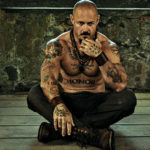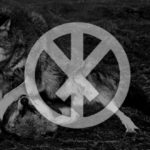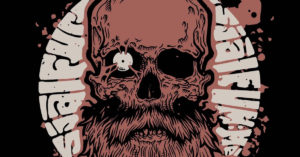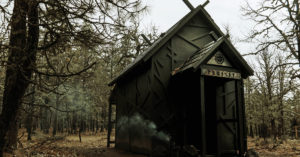The Way of Men, Gods and Runes
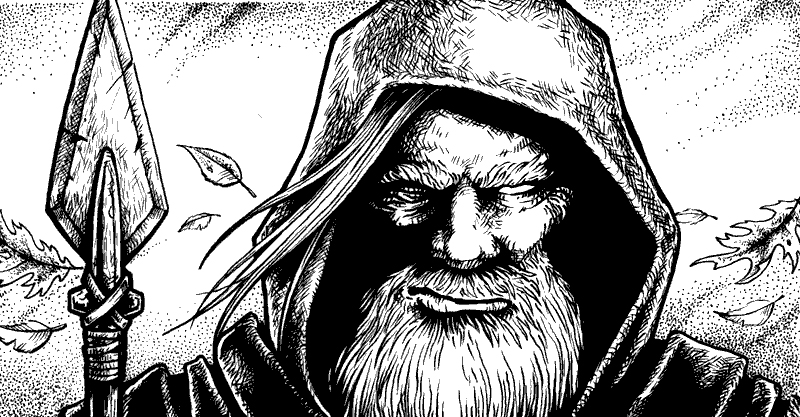
Strength, Courage, Mastery and Honor are the four “tactical virtues” that I used to define primal masculinity in The Way of Men. In a band-level society or “gang,” these are the virtues that men would look for and value in other men, because men who are strong, courageous, competent and loyal make better cooperative hunters, fighters and protectors. I talk more about defining masculinity in this video, but for an in-depth explanation of my “gang” theory of masculinity and the tactical virtues, read The Way of Men.
Like many of my readers, I’m drawn to Germanic Paganism and Runes. It occurred to me that each of the tactical virtues could probably be assigned a corresponding rune.
For those who aren’t familiar, the runes come from a series of alphabets that were scratched into rocks, wood and metals by various Germanic peoples. But each rune is also associated with an abstract concept or “mystery” and also sometimes a natural form — like ice, hail or a yew tree. As such, they become a simple shorthand for a bigger, more complex idea.
This was my first formulation:
Strength – ᚢ (uruz)
Courage – ᛏ (tiwaz or Týr)
Mastery – ᚱ (raido)
Honor – ᛟ (othala)
Uruz is associated with aurochs, the now-extinct ancestor of modern domestic cattle. According to the Anglo-Saxon Rune Poem,
“The aurochs is proud and has great horns;
it is a very savage beast and fights with its horns;
a great ranger of the moors, it is a creature of mettle.”
Aurochs were very large, with bulls reaching a shoulder height of almost 6 feet, and weighing almost a ton. Uruz works as a symbol of raw strength. I like it for any kind of strongman or powerlifting or other “beast of burden” training, and I have it scratched into my lifting belt. “Strong like bull.”
Raido means “ride” or “journey” and it is associated with becoming and, according to Edred Thorsson’s Runelore, “rightly ordered action.” In Collin Cleary’s essay, “Philosophical Notes on the Runes” in Summoning The Gods, he identifies Uruz as the “Will to Form” and links it directly with Raido, “Dynamic Order.” I’ve been personally associating Raido with technical ability and the ability to apply concepts in motion for a while.
This arrangement makes sense, but it occurred to me that the tactical virtues align perfectly to the gods themselves. The gods can be seen as aspects not only of elemental man and nature, but also as aspects of manliness as an idea.
Strength – Thor ᚦ
Courage – Tyr ᛏ
Mastery – Odin ᚨ
Honor is Othalaᛟ — not a god, but a runic concept that in this application encloses and represents the sum of the others.
The Mannaz rune symbolizes man, so, in a formula:
Man, or (Mannaz) ᛗ = ᚦ + ᛏ + ᚨ + ᛟ
There is also an optional addition to the concepts that describe masculinity which corresponds directly to the qualities of the god Freyr.
Below are my brief rationales for linking the virtues to gods and runes. As we really don’t know exactly how our ancestors might have used the runes or conceptualized them — and even then, which ancestors? in what place? in what period? — I can only speculate and make my own associations based on what information is available. The purpose here is to take something old and breathe new life into it, and make it useful to men who are alive today.
Thor – Strength
Thor, god of thunder and lighting, is known for his strength and muscularity. He wields a heavy hammer, Mjölnir, and when he wears his belt, megingjörð, his already great strength is doubled.
In Gylfaginning, Thor is said to be, “the strongest of all gods and men.” When tricked by illusion into thinking he was fighting a sleeping giant, he split valleys into mountains with his hammer, and through further deception was tricked into drinking so much of the sea that it ebbed, and lifting part of the serpent that circles the world into the sky.
The rune ᚦ is called Thurs or Thurisaz. ᚦurs means “giant” in Old Norse, and it is the work of Thor to use his strength to battle giants and split their skulls.
It’s often occurred to me that “might” could be a better word than “strength” for the tactical virtue, because it seems to covers a wider range of physical capability and power — though the words are often used interchangeably. Might includes speed, athleticism and dexterity — all aspects of strength.
Týr – Courage
Týr is best known for the courageous sacrifice of his hand to the wolf Fenrir, the monstrous offspring of Loki and a giantess. To trick the wolf into allowing itself to be bound, Týr agreed to place his hand in the wolf’s mouth as a guarantee of good faith from the gods. When Fenrir could not break free and realized he had been tricked, the wolf bit off Týr’s hand. He is often referred to as the “one-handed” god, as in the Icelandic Rune Poem.
“Tyr is a one-handed god,
and leavings of the wolf
and prince of temples.”
The Romans identified the Germanic worship of Týr with their own worship of Mars, the Roman god of war. Týr has long been associated with courage, martial valor, victory and doing what must be done to maintain a right order of things.
A man who will take no risks or make no sacrifices for the group when risks are necessary can’t be counted on, and his aversion to risk could actually make the group more vulnerable as a whole. He won’t hunt the aurochs or fight the enemy.
Odin – Mastery
Odin hung himself for nine days and nights, until the forms of the runes revealed themselves to him. He ripped out his own eye for the opportunity to drink from Mímir’s well and gain knowledge of the past, present and future. Odin has many names and aspects, but in his essay, “What is Odinism?,” in TYR: Myth, Culture, Tradition.Volume 4, Collin Cleary argues that “Odin’s key feature is his ceaseless quest for knowledge.”
“Closely connected with this is his striving for power. But these are so tightly linked that they are almost corollaries of each other. Greater knowledge — increased insight into the nature of the universe and its secrets — brings with it an increase in the ability to manipulate and to control all manner of things. So that, as the saying goes, knowledge is power.”
Odin wants to know, understand and master the world. Mastery is the tactical virtue that critics of the tactical virtues always seem to skip over.
Engineers and programmers and researchers and philosophers always seem to want masculinity to be about being an engineer or a programmer or a researcher or a philosopher. If they don’t see themselves as being strong or courageous, they tend to discount the importance of those virtues and re-stack the deck so that their own virtues are the most important ones.
Understanding, judgement, wisdom, knowledge and technical proficiency are essential virtues in any survival group — because otherwise you have a bunch of strong, clumsy guys who don’t know anything taking risks for the sake of taking risks. Mastery is technology, and technology is a kind of magic to those who don’t understand it. Martial arts require mastery. Tool and weapon making and operation require mastery. Strategy and tactics require mastery.
Knowledge is power, but without the courage or the ability to use that power — apply it — knowledge is just information. Knowledge is only useful when it is used, though having no immediate use for knowledge does not make that knowledge useless.
Mastery alone can’t define masculinity, and while Odin is the Allfather, he’s not the only god, because human life is also a physical endeavor. We are our bodies, and our bodies must survive to make the seeking of knowledge possible. To think otherwise is a conceit of the spoiled. Violence is Golden, and that conceit depends on the outsourcing of strength and courage and the protection of the perimeter to “someone else.”
Othala – Honor
Honor, as I defined it in The Way of Men, is about loyalty to a group. You behave a certain way, make sacrifices and do things you wouldn’t normally do because you care what the other men in your group think of you. If you act like you don’t care what anyone thinks of you, you are more attached to a group than part of it. You’re a wild card. Your honor is your reputation among your peers and your commitment to them. Honor is about the “us” — those who are “within the perimeter.”
In Runelore, Edred Thorsson refers to Othala as “the sacred enclosure” and writes that, “in it is embodied the central concept of Midhgardhr and of the whole idea of ‘in-sidedness’ and ‘out-sidedness’ so prominent in Germanic (and Indo-European) thought.”
Because masculinity is both a physical reality and a way of being, a man who does not care about masculinity or being regarded as masculine cannot be masculine. Now, many men will bluster and tell you they don’t care what anyone thinks of them, but they will draw lines in the sand quickly if you start asking them to dress or behave like women in public. They still chafe at being called weak or cowardly. They still care about being seen as masculine by others, but in many cases those “others” may be absent or abstract. Men who barely have any friends at all still care about “others” seeing them emasculated.
In a globalized world with billions of humans, choosing who you are loyal to and which men you agree to be judged by is especially important, because you can’t please everyone. There are feminist men who have inverted masculine virtues to the extent that if you show that you value strength, courage, mastery and honor, they will (hypocritically) call you a coward for clinging to “old ideas” about masculinity.
Your honor is your reputation as a man among men, but because there are so many men with so many ideas about masculinity, to stay sane you have to decide which group or kind of men. Define your boundaries and close the circle, or leave yourself open to judgment by a thousand codes and billions of eyes.
The sowilo or sig rune ϟ has also been associated with honor and victory, as well as the sun. Depending on how the rune is formed, two facing sig runes can be joined to create an othala rune.
Freyr (Ingwaz)
It is likely that the majority of the warriors who fought and died in wars probably did not have children. A lot of them probably died virgins. Many young men have joined dangerous expeditions, war bands, pirate ships, armies and so forth with the hope of one day being able to afford a wife or children or even a regular whore. A man can demonstrate all of the tactical virtues and be regarded as an exceptional man among men, but remain a bachelor or without children. Two Odin-like adventurers, soldiers, researchers and writers — Lawrence of Arabia and Richard Francis Burton — both died without children, and they would be regarded as having been good at being men by almost anyone. I’m sure you’ve encountered fathers who appear to be extremely weak, passive, cowardly or effeminate. Masculinity can exist without fatherhood, and frequently does, and extremely effeminate men can become fathers, so fatherhood cannot define the phenomenon of masculinity as a way of being.
Still, fatherhood follows naturally from manhood, and without children, no band, gang or tribe can survive more than a generation unless it continually recruits from outside. Most men who survived long enough eventually fathered children by a wife, mistress, slave or concubine. Fatherhood is an aspect of masculinity and a role that most men eventually take on in some form. It’s not essential to masculinity, but it’s still important and relevant.
The god Freyr is associated with fertility, the harvest, wealth, peace and prosperity. And just as fatherhood is separate from but linked to masculinity, Freyr is separate from but linked to the other gods, who are known as the Aesir. Freyr is one of the Vanir, a distinct tribe of gods who fought with the Aesir until a truce was called and Freyr, his sister Freya, and their father Njörðr – a god of seafaring and wealth – went to live with the Aesir. Odin is, of course, “The Allfather,” and could be associated with fatherhood as well, but Odin as a concept is more concerned with big ideas than with home life and the everyday reality of fatherhood.
